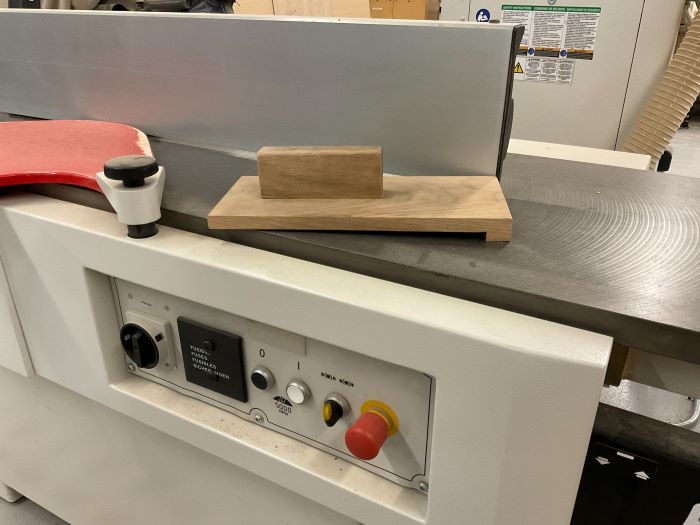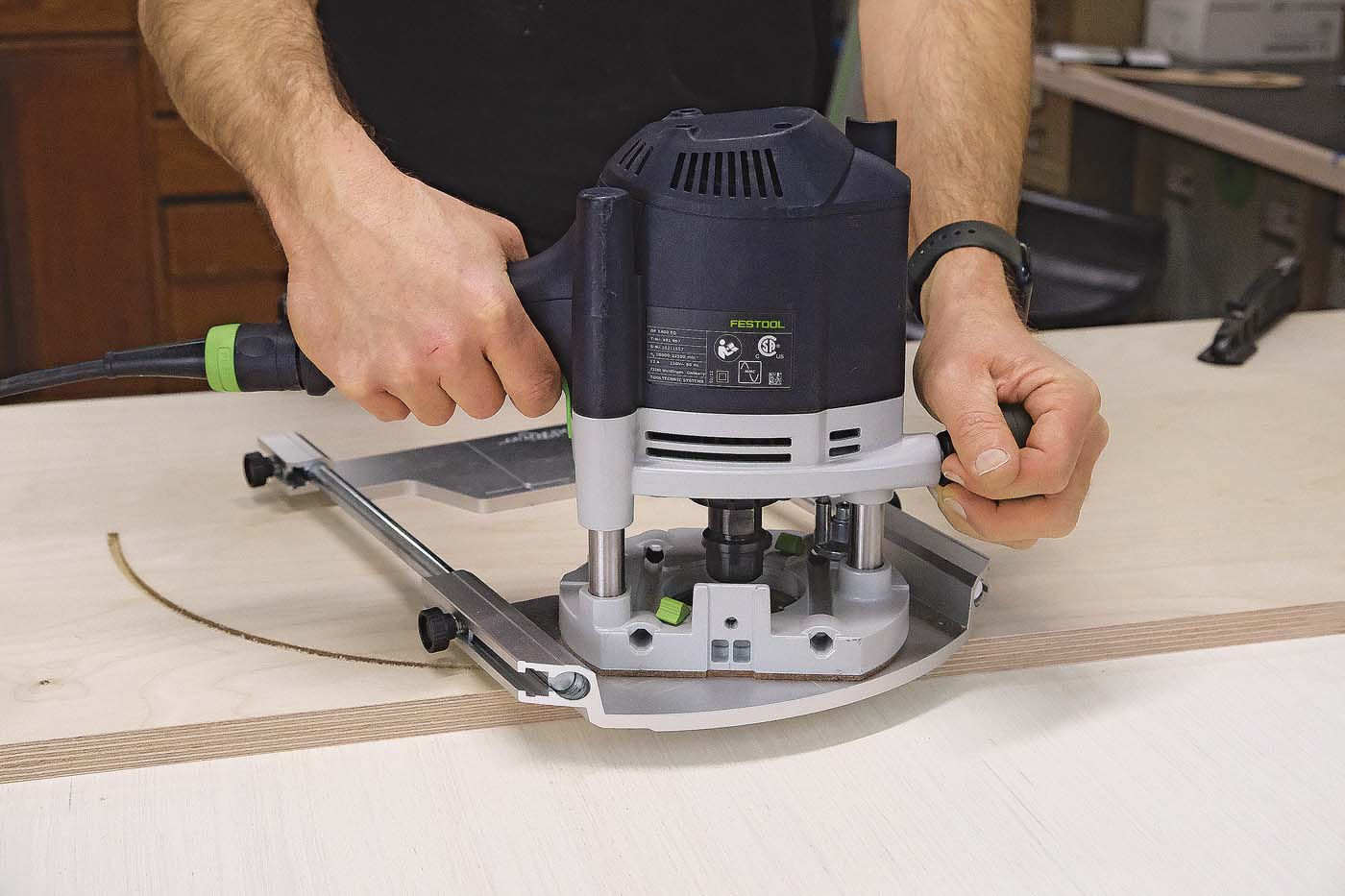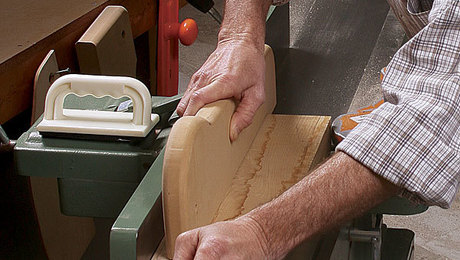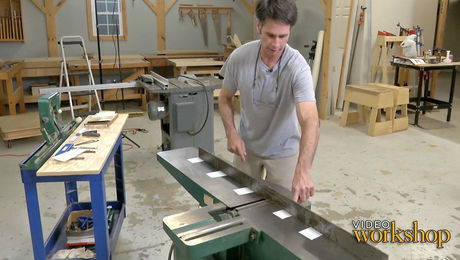The jointer hook
Learn how to make a simple tool from scraps around the shop to get more consistency from your jointer.
I remember my first day in a large commercial wood shop; I mean insanely large. We’re talking a nearly 100,000 square foot space half dedicated to wood processing. Coming from 3-car garage shops, this place looked like NASA to me.
At the time, I was taking a leap from replicating historical millwork with some old friends into the modern building world. Needless to say, I was impressed and a bit intimidated at first. This was not made easier by the grizzled man who sized me up and gave me the best test to tell the skill level of a woodworker: “Flatten and square 2 sides of these boards.”
I could flatten a board as well as anyone, but when I pulled my cart up to the 24″ Tersa jointer, I was a little out of my element. I had worked on jointers forever but nothing over a 10″. Most of you know a 10″ jointer will do things you never thought it would do when there is no access to a larger one, but now I felt like I had no restrictions. I didn’t know when I would process something that wide, but I had a feeling they would only have it in the shop if only it was necessary. So after flattening and squaring a cart of Sapele door sash parts, he looked over my work and said, “Now those”, gesturing to an absolutely terrifying stack of lumber I thought would take me weeks to process.
I wheeled some carts over, understanding I had passed the test. I loaded the parts and returned to the jointer to find a jointer hook — a hybrid of a bench hook and a push stick. I had never used or seen one before. Previously, the most lumber I had ever processed was only enough to complete a few windows or maybe two doors at once. I could tell this was going to help: No amount of paddles or nitrile gloves could get me through this dizzying stack of lumber in a timely manner.
The days and weeks went on processing kilometers of lumber per day; a nauseating amount of time standing over something so dangerous, leading to the process I found to be the best for joining boards. Using a push paddle to lead the cut ensures proper pressure on the outfeed table to remove bows and twists. Additionally, making sure not to press too hard to deflect the board and always keeping your hand at least 3” away from the cutter head is of the utmost importance. Plus, using a jointer hook to trail the board provides no excess downward pressure, all while moving a heavy or otherwise resistant board over the knives safely and consistently.

Ultimately, a jointer hook is a simple scrap wood tool that I insist everyone makes to keep next to the jointer, even if only to use it once on a piece that you are struggling with. One of the more straightforward tools to make, it is fundamentally a bench hook with a handle on the top. The only exception is that I would recommend not using any metal fasteners (screws, nails, etc.) to keep from scratching or chipping anything on the jointer. There are no formal dimensions, but I usually make the hook about 1″ long and ⅜” thick — only because that is what I found has worked the best. I start by attaching the “handle” via a few dowels and some glue towards the leading end of the hook. After the glue is dry, cross-cut on the table saw to ensure a square hook at ⅜” height 1″ from the end.

I then take it over to the band saw to cut away the front end of the hook towards the back, leaving the 1″ x ⅜” hook remaining.

Just for good measure, I take it to the bench, make sure the base is flat with a low-angle plane, and knock down the handle and edges to make it comfortable for the hand.

After the first one, you will find what feels comfortable and what works best for your process. I have two by the jointer (12″ and 20″). I often pass 9′ long 14″ wide 8/4 oak over the jointer, and with every pass I reach for it. I hope this helps some people struggling with feeling comfortable and safe on the jointer and keeps the digits in the double range.

Fine Woodworking Recommended Products

Woodriver Circle Cutting Jig

Hedgehog featherboards

Double Sided Tape

























Log in or create an account to post a comment.
Sign up Log in